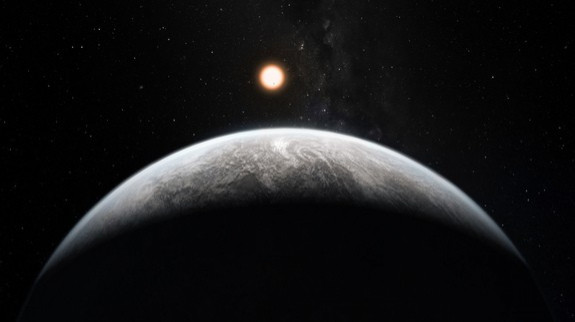Astronomers Discover Low-Mass Planet Inside Habitable Zone

European astronomers have announced that they have discovered a second planet outside the solar system that could potentially support terrestrial life.
The planet named HD 85512b is one of the fifty planets astronomers recently discovered with the help of High Accuracy Radial Velocity Planet Searcher (HARPS), also known as The Planet Hunter, at the European Southern Observatory's (ESO) location in La Silla, Chile.
The latest discovery, which includes 16 super-Earths, is the largest number of such planets ever announced at one time. A super-Earth is an extra solar planet with a mass higher than Earth, but substantially below the mass of the Solar System’s gas giants.
The new planet HD 85512b has caught the attention of Astrophysicists for having the potential to support life as it orbits a star about 36 light years from Earth in the constellation Vela. HD85512b is the second planet after Gliese581d which was discovered in 2007 outside our solar system which can potentially support life, according to ESO press release.
The new planet is about 3.6 times the mass of Earth and is closer to its star than the Earth is to our sun, completing a full orbit every 60 days. Its star is about 1,800 degrees cooler than our sun.
“This is the lowest-mass confirmed planet discovered by the radial velocity method that potentially lies in the habitable zone of its star, and the second low-mass planet discovered by HARPS inside the habitable zone,” said Lisa Kaltenegger, an astronomer with Max Planck Institute for Astronomy, Heidelberg, Germany.
The astrophysicists used a method of reflectivity to find out how much energy a unit receives from its star. The more the star reflects the more likely the planet is of having a cloudy atmosphere which leads to a possibility that the planet may have water on its surface.
Scientists believe the new planet has the so-called Goldilocks zone, which refers to planets that are neither too hot nor too cold to support liquid water.
If we are really, really lucky, this planet could be a habitat comparable to Earth. This is a very exciting planet because if it is rocky, it will be the second confirmed planet that is within the habitable zone of its star, said Lisa Kaltenegger.
The temperatures in the planet are estimated to range from 30 to 50 Celsius and anyone in the planet would feel very warm and it hasn't been determined yet whether the planet is rocky like Earth or made of gas like Jupiter. For it to support life it would need to be rocky, instead of being gas-based like Jupiter and would need enough cloud cover from its atmosphere to keep the surface cool.
© Copyright IBTimes 2024. All rights reserved.





















